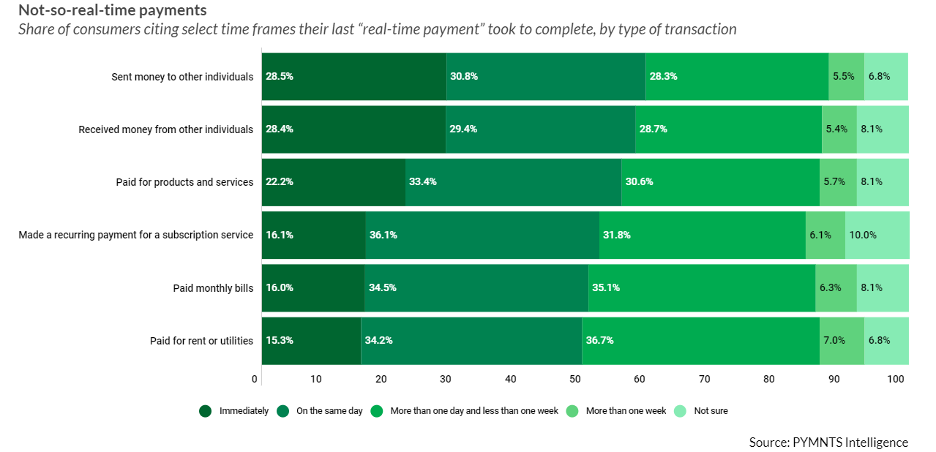Over 70% of Consumers Do Not Believe Real-Time Payments Are Truly Instant

Consumers are increasingly embracing the immediacy and transparency offered by real-time payments. And the migration to ISO 20022, a new global standard for secure and efficient messaging between financial institutions (FIs), is expected to further accelerate this trend.
When it comes to benefits, real-time payments offer more than just speedy transactions. They provide a modern, secure payment method with instant settlement, guaranteed immediate access to funds, and confirmation through account balance updates.
In “ISO 20022 Implementation Highlights Real-Time Payments’ Value,” PYMNTS Intelligence draws on insights from multiple proprietary research studies of consumers and executives to examine the evolving real-time payments preferences and expectations.

According to findings detailed in the study done jointly by PYMNTS and ACI Worldwide, consumers are incorporating real-time payments into various aspects of their financial activities, including routine bill payments. In fact, 31% of bill-payers consider real-time payments important for tracking, reviewing or paying monthly bills.
However, there is a lack of clarity among consumers regarding what constitutes a real-time payment. Only 29% of consumers who claimed to have made real-time payments believed that the payment cleared immediately. Additionally, 28% of consumers reported that it took over a day for their “real-time payment” to be processed, while nearly 6% said it took more than a week. When it came to those making monthly bill or subscription fee payments, only 16% believed their real-time payments were processed instantly.
While this gap in understanding poses a challenge, the growing demand for immediacy and transparency in transactions is a clear signal to businesses to catch up or risk missing out. However, only 36% of executives overseeing consumer collections at large firms recognize the importance of real-time payments, indicating a slow response from key sectors in meeting consumer expectations.
Examining the data further shows that while 72% of FinTechs have already implemented real-time payments, credit unions (CUs) have been more cautious, with only 22% offering this payment method. This discrepancy highlights the potential challenges CUs may encounter in keeping pace with shifting consumer preferences.

